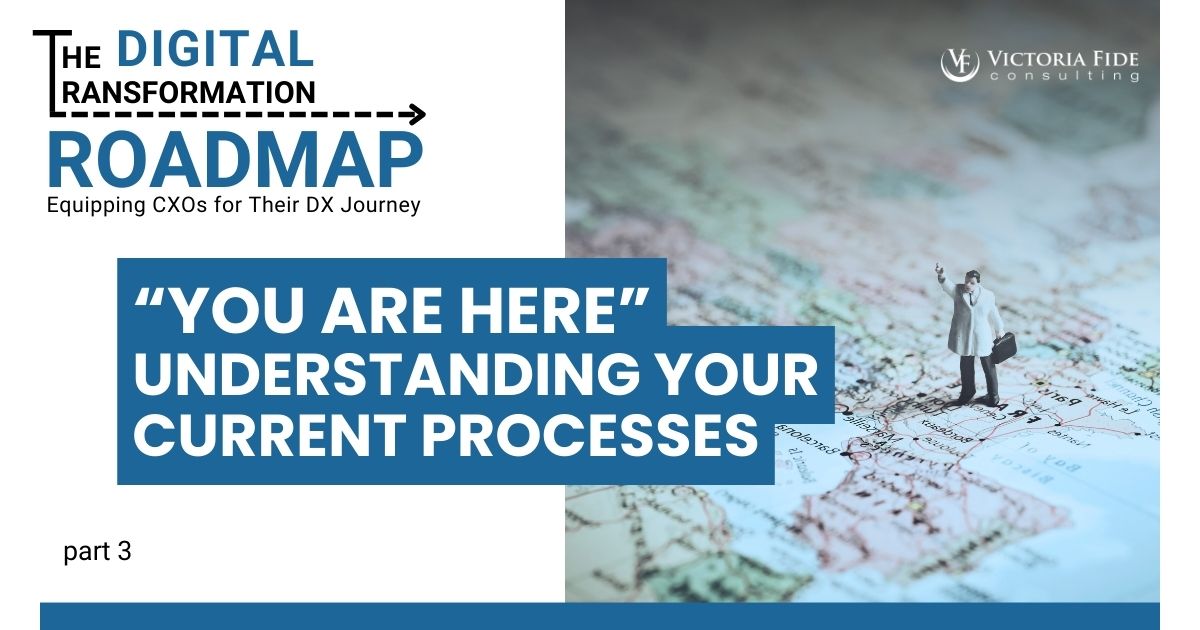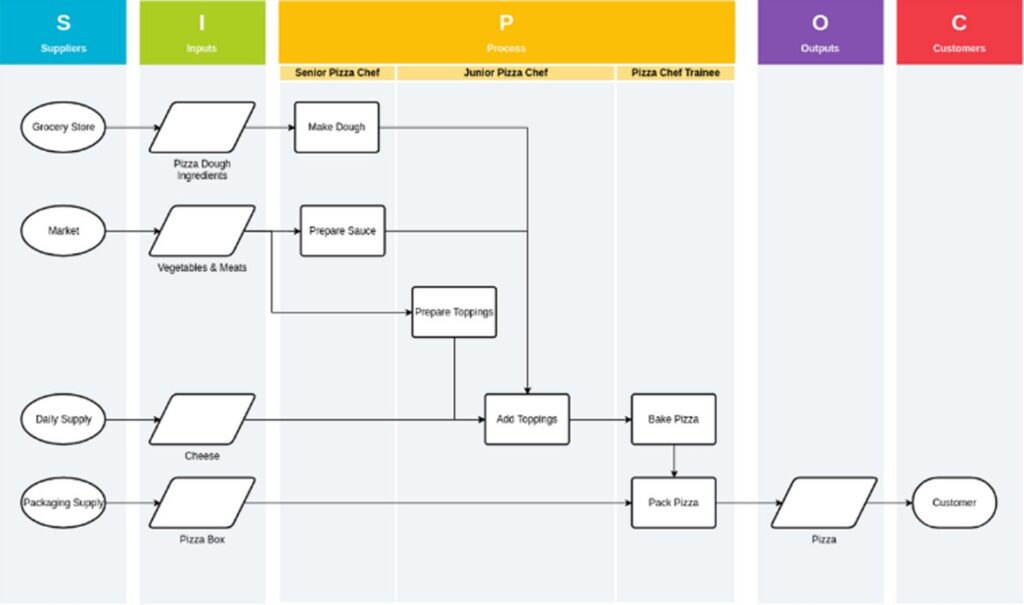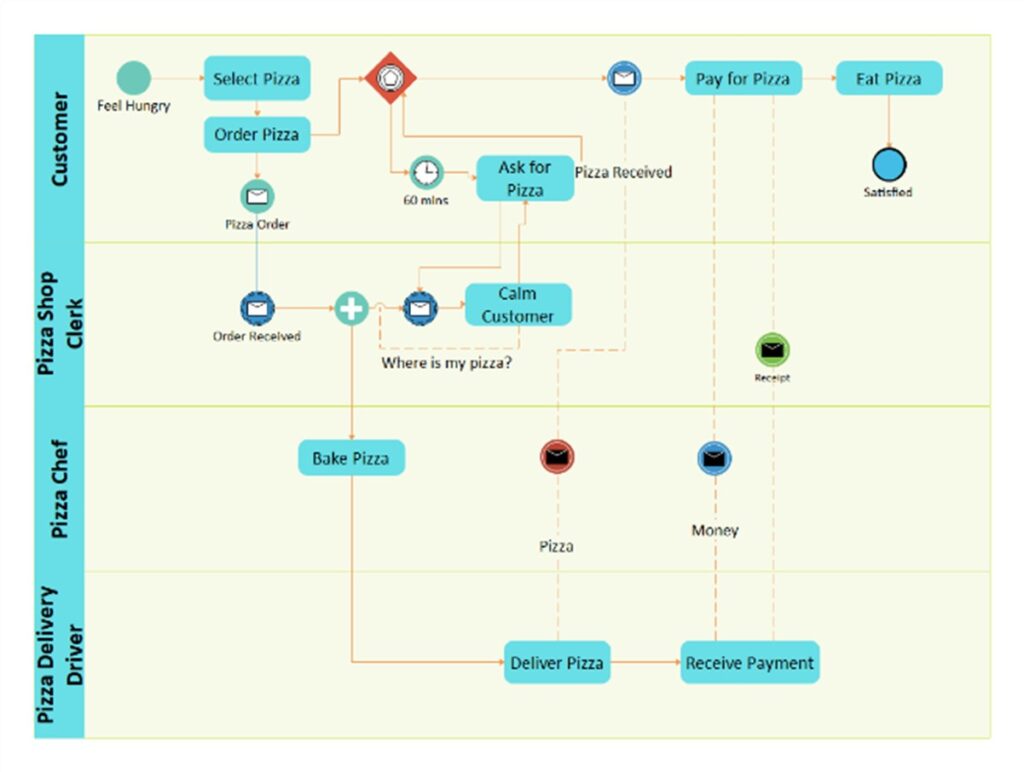
“You Are Here” – Understanding Your Current Business Processes
The DX Roadmap series is produced by Victoria Fide Marketing with input and oversight from our leadership team and industry SMEs.
Table of Contents
So, you’ve just narrowed down the area of focus for your digital transformation (DX) initiative through a series of business and technology vision meetings. Your executive team is aligned on the organizational priorities, and you’re eager to begin working to transform your vision for the company into a reality. Now what?
Do you remember back before a Global Positioning System (GPS) became a constant accessory in our pockets? Consulting a physical map was the only way to navigate through unfamiliar roads, cities, and countries. However, staring at a map was useless if you didn’t know where you were in relation to the map. To determine how to get to your desired destination, you must first identify your current location.
The same is true with DX initiatives. Just as a mall directory includes a big star with the words, “You Are Here”, an Enterprise Process Review provides a clear and accurate indicator of where your organization is regarding its processes.
In this article, we will explore the purpose of the Enterprise Process Review. We will guide you through the step-by-step instructions needed to conduct this review in your own self-directed transformation, and how this assessment will inform and guide the next steps of your DX journey.
The Foundation of Transformation: Know Thy Enterprise
Reviewing the ‘as-is’ state of your processes is not simply an exercise in cataloging; it’s a crucial steppingstone on the path toward optimization. The primary goal of the Enterprise Process Review is to garner an accurate and comprehensive understanding of the current processes within the scope defined in the business and technology vision meetings, and to record them with proper, comprehensive documentation. This documentation will be used as a starting point to identify and address inefficiencies, compliance gaps, and areas for optimization.
The Business Process Owner (BPO), the person who is responsible for the process, can inform you of how the process is supposed to work, but to achieve the level of detail and documentation required, you will need to interview the people who actually perform these processes – generally the Subject Matter Experts (SMEs). Ideally, you will observe each step within the process, and observe each output. Until this investigative work is completed and documented, decision-makers generally do not understand what is really going on within their own organization.
It’s important to reiterate that the goal of this process review is not to solution new processes, but rather to gain a holistic understanding of the current processes in order to inform and guide the next steps of your DX journey.
Step-by-Step through Your Enterprise Process Review
This section isn’t for the faint of heart; it’s for the leaders who are ready to roll up their sleeves and ask the tough questions: Who is really doing the work? What, Where, How, and — perhaps most importantly — Why do they do it? More than simply identifying steps and activities, you must comprehend the motivations, pain points, and underlying objectives behind each step.
Your Business Process Owners (BPOs) will generally know the high-level intent of certain aspects of the process, but your Subject Matter Experts (SMEs) will be the key informants during this investigation. As you interview them, aim to identify the following key aspects for each process:
- Pain Points: Start by exploring the pain points and constraints associated with the process. This will help uncover areas that require attention and improvement. It will also provide critical requirements when solutioning a new process. Whether it’s a resource issue, a technological limitation, or a bottleneck in the hierarchy, identifying these constraints is instrumental. For example, we observed a process where the user “printed” emails to a PDF and then moved them to a folder in SharePoint. When asked why they performed that step, we were informed that is how they had been trained. After further investigation, we found out that this practice started several years ago when someone determined they didn’t trust the email system to keep a record of the email and they felt it may be important to have the history someday.
- Secret Sauce: Most companies have what we refer to as a “secret sauce” – something that makes the organization unique and sets it apart from the competition. It’s important to identify if that secret sauce is present within the process you are reviewing. If so, you will want to ensure that it will remain after the transformation takes place. Make sure to document the steps in the process that are part of that secret sauce.
- Objectives: What is the objective of the process? Why does it exist, and what is it accomplishing? Take the time to drill down and ask about the objective of each step within the process. This will provide valuable context and help you comprehend why certain steps are executed in a specific manner. Be sure to get the perspective of both the BPO and the SME. Any differences of opinion are often very enlightening.
- Steps: What are the steps within the process? Make sure to include every step. For instance, take a process like client onboarding in a financial services firm. Each step should be laid bare: from initial client contact, through due diligence checks, account setup, risk profiling, product selection, to final confirmation of the account being live. This micro-level analysis reveals the intricacies of the workflow while also highlighting areas primed for optimization with digital solutions. You don’t need “click-by-click” detail, but simply every step that is performed by a particular role or produces an output.
- Roles: Who is responsible for this process? Who performs the process? If there are multiple people involved, you need to understand which role performs which step in the process. This will help clarify any confusion and ensure accountability throughout the process.
By considering these details and engaging with SMEs, you can gather valuable insights to enhance and optimize the processes within your organization.

Transformation is not easy, but it doesn’t have to be impossible. Take control of your project’s success today and schedule a free 30-minute consultation to find out how Victoria Fide can equip you for transformational success.
Documentation: Capturing a Bird’s Eye View of Business Processes
You’ve spoken to the BPOs and SMEs, now it’s time to organize your findings into a process diagram and narrative. This may seem like a tedious waste of time and resources, but clear documentation of these processes is fundamental to the success of future activities, such as process optimization and solution design. This information is also used to help capture requirements during analysis and is critical in understanding the impact of change when forming a Change Management plan.
By providing a diagram as well as an in-depth narrative document, it ensures that everyone – from the C-suite to the interns – clearly understands the objectives, steps, and roles within the process. The documentation is your map, not just to be read, but to guide the hands that will restructure the enterprise landscape.
Visual Panoramas: BPMN and Beyond
A high-level diagram provides a clear and universally accepted representation of your processes. This visual should be the centerpiece of your documentation, something that can be understood by anyone and easily referenced. Visualizing the ‘as-is’ process in comparison to the desired ‘to-be’ outcome greatly increases the ease of identification and comprehension of the changes.
We use the Business Process Modeling Notation (BPMN), but Suppliers, Inputs, Processes, Outputs, and Customers (SIPOC) is another common method for documenting end-to-end processes. You can also use Activity Diagrams or other forms of Flow Charts. While these don’t offer the same level of information, they can still be helpful in describing the process. Whichever method you choose, the goal remains the same: to provide a comprehensive and organized overview of your enterprise processes.


Process Narratives: Bringing the Map to Life
While a diagram is accessible, memorable, and easily referenced, it isn’t enough on its own. A narrative document is necessary to detail what happens, who is involved, and most importantly why each step is undertaken. This narrative should answer the following:
- Objective: Above all else, you need to be able to clearly articulate the objective of the process. What is its purpose? What need is it meeting? Why does it exist?
- Roles and Responsibilities: What role owns the process and is responsible for its definition, effectiveness, and conformity? What other roles are involved and what is their involvement?
- Narrative: At the risk of being obvious, you must include a step-by-step narrative of the process execution. What are the steps? What are their purposes? Who is responsible for executing them?
- Trigger: What starts the process? Who or what provides the trigger?
- Inputs: This applies at the process level as well as an individual step within the process. What are the inputs necessary to start the process or step? Who is responsible for providing each input? What purpose does the input serve?
- Outputs: Again, this may be at the process level or the individual step. What is the output or end result of the process or step?
Your documentation, including both the diagram and narrative, becomes the primary artifact for discussion and exploration in the next phases of transformation.
There are several tools that will help you combine the diagram with the narrative. One of the tools we often use is IBM Blueworks Live. This will allow you to create a diagram, capture all the relevant information for a process, and then generate a document containing all the information.

Charting Your Pathway to Transformation
The Enterprise Process Review is more than just a checkbox to tick; it is the cornerstone upon which future process optimizations, systems implementations, and organizational success will be built. To those seeking a profound transformation, it’s your meticulous and all-encompassing approach to understanding your processes in the Enterprise Process Review that will carve out your path to success.
Remember, this review is just the beginning of your DX journey. Each step along our roadmap informs the next, creating a seamless progression from dream to re-imagined reality. Bookmark this article and revisit it when you’re ready to challenge the status quo and drive meaningful transformation to stay competitive in today’s fast-paced world. Fight back against the mentality of, “this is how it’s always been done,” and subscribe to receive more tactical, step-by-step instructions to guide you through your DX journey, including next week’s article on assessing the state of your company’s systems and infrastructure in order to inform your technology investments.
Thank you for taking this journey with us as we explore what it takes to make change positive. If you want answers to your specific questions or help charting a custom roadmap for your digital transformation, reach out to the digital transformation experts at Victoria Fide. We have the compass and the expertise necessary to guide you through the most turbulent seas of change, equipping you to succeed in your transformational technology initiative.
Subscribe to our weekly LinkedIn Digital Transformation Success newsletter and get notified of each new edition.
